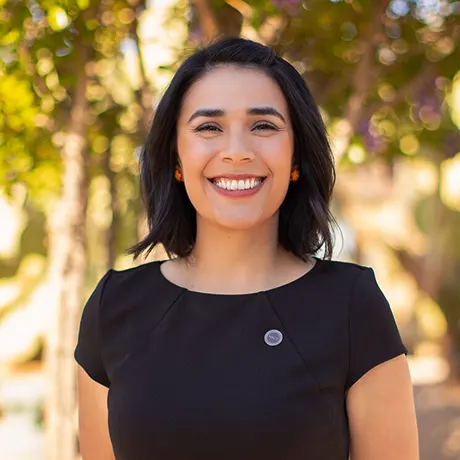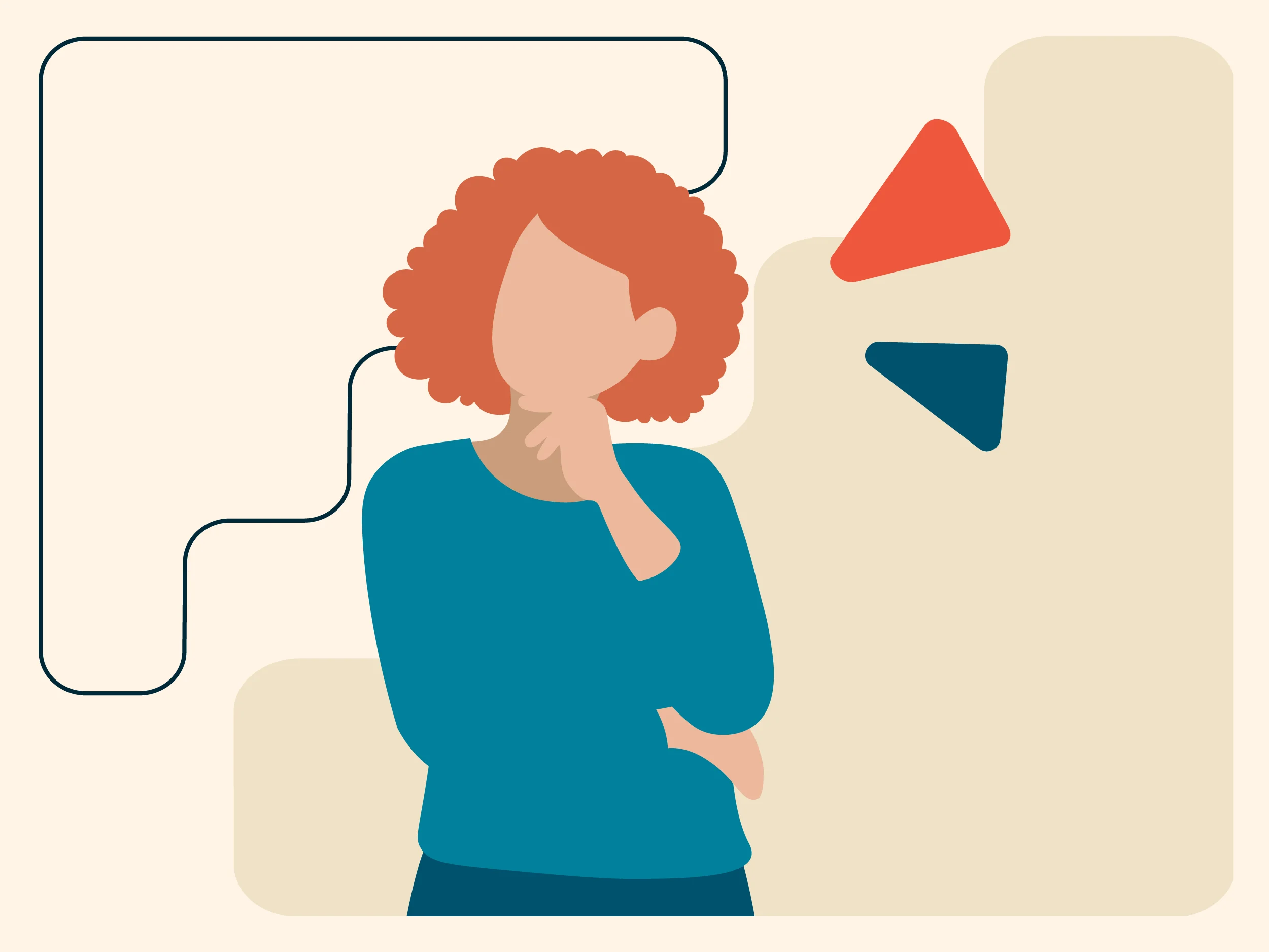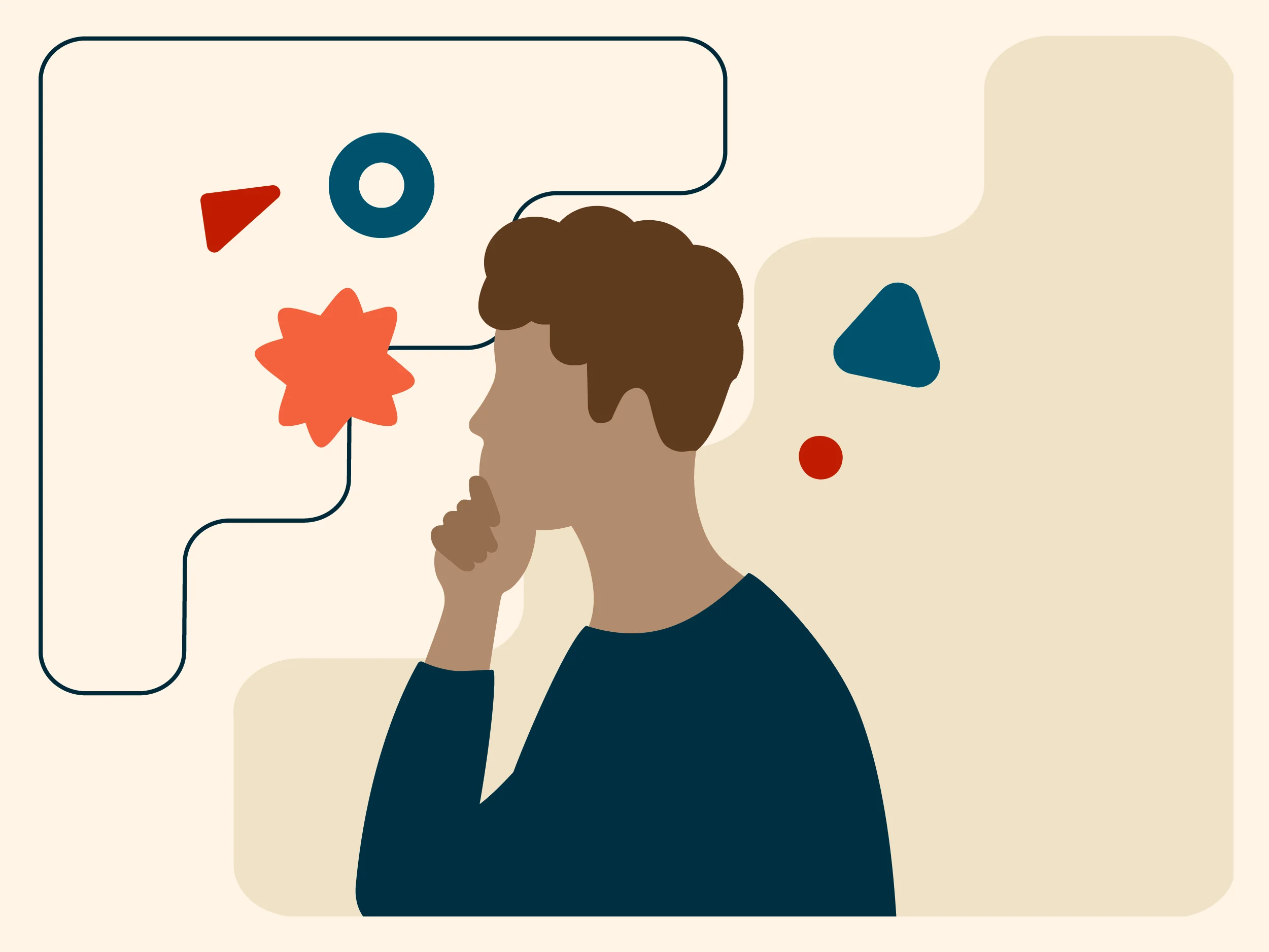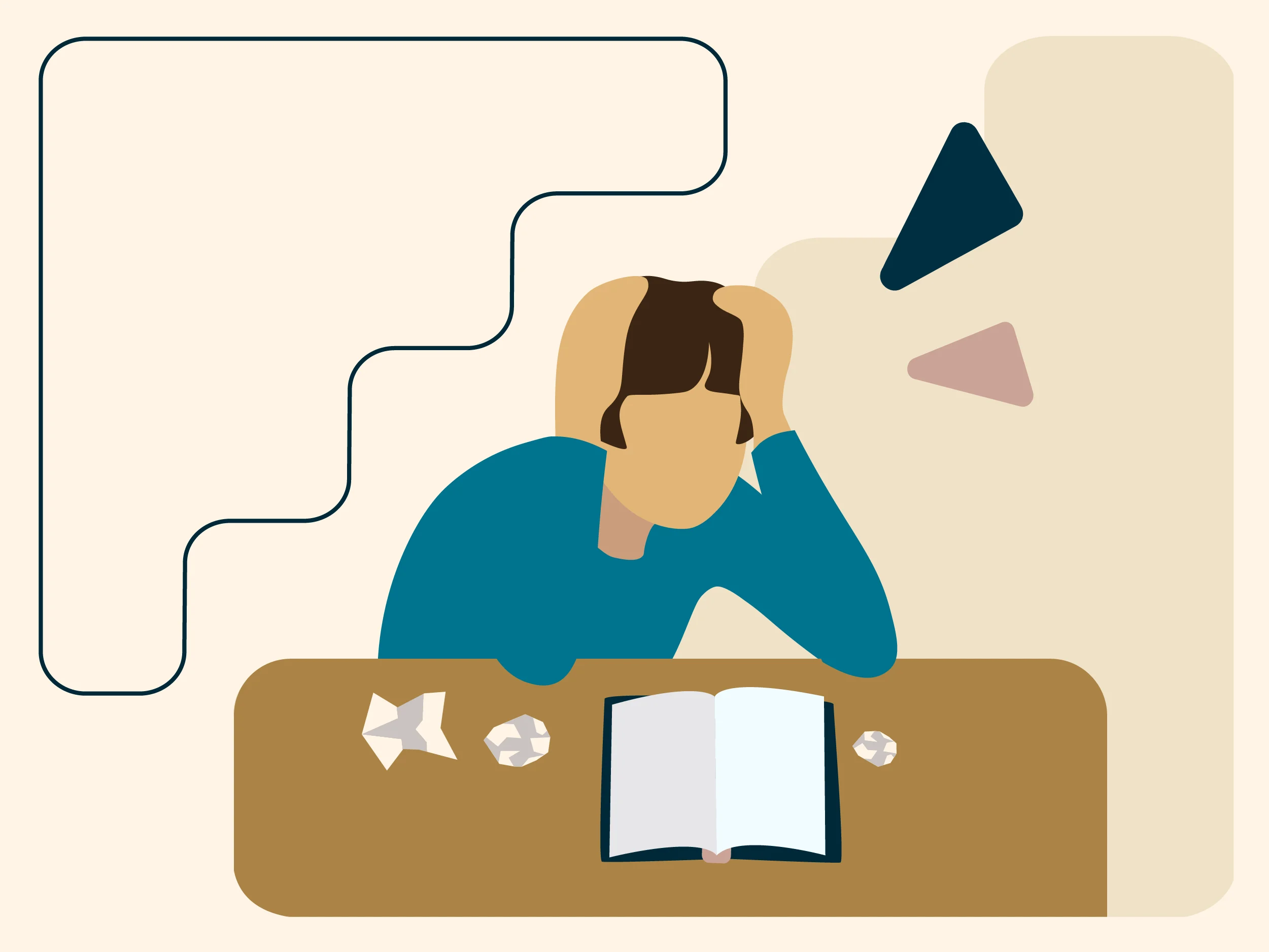IEPs: Special education terms and your legal rights
Watch the episode, listen to the audio, or read the transcript.
Stay in the know
All our latest podcasts delivered right to your inbox.
If your child qualifies for an IEP, it will come with many legal rights and protections. But with names like “FAPE” and “prior written notice,” things can get confusing quickly.
Still, it’s really important for parents to understand these terms — and that's where this podcast comes in to help.
In this episode of Understood Explains, host Juliana Urtubey breaks down some key terms and explains the legal rights that come with an IEP, or Individualized Education Program.
Timestamps
[00:46] FAPE: Free Appropriate Public Education
[03:07] Least restrictive environment
[07:32] Informed consent
[08:23] Prior written notice and “stay put” rights
[10:48] Other key rights
[11:56] Key takeaways
Understood.org is a nonprofit resource dedicated to shaping the world so the millions of people with learning and thinking differences can thrive. Learn more about Understood Explains and all our podcasts at u.org/podcasts.
Copyright © 2024 Understood for All, Inc. All rights reserved.
Related resources
Episode transcript
Juliana: If your child qualifies for an IEP, one of the first things the school is going to give you is a packet that explains your rights during the special education process. It's really important and it's really long. And we're going to give you a cheat sheet.
From the Understood Podcast Network, this is "Understood Explains IEPs." In this episode we're talking key terms and legal rights you'll want to know if your child qualifies for an IEP. My name is Juliana Urtubey and I'm the 2021 National Teacher of the Year. I'm also an expert in special education for multilingual learners. I'm your host for this season of "Understood Explains," which is available in English y en español. OK, let's get started.
[00:46] FAPE: Free Appropriate Public Education
So, let's start with FAPE. FAPE stands for Free Appropriate Public Education, and it's probably the most important right for kids with disabilities. It means public schools have to meet the needs of each child who qualifies for special education, without their families having to pay for it. The right to FAPE is a really big deal. It's the reason why schools create IEPs, and it also drives the decisions about what to include in each IEP.
The rights of FAPE means schools need to provide specially designed instruction to meet your child's unique needs. FAPE is also what makes schools provide services — like speech and language therapy or mental health counseling — and accommodations like read-aloud tools or extra time on tests.
FAPE is the reason IEPs provide these kinds of things to help kids make progress in school, and the right to FAPE covers more than just academics. In fact, we have a whole episode coming up about how IEPs can help with behavior.
So, where does FAPE come from? It's part of a federal law called the Individuals with Disabilities Education Act, or IDEA. And the Right to FAPE applies to all kids in the US who qualify for an IEP. This includes public school students who are undocumented. It also includes kids who are homeschooled, and there are even some public resources available to help kids with disabilities who go to private school.
OK, so we've talked about how FAPE makes schools do some very important things. But I want to be clear about something FAPE does not require schools to do. FAPE doesn't mean schools have to provide the best services possible. For example, if your child has dyslexia, you may want the school to provide a certain kind of reading instruction, and as a member of the IEP team, you can make that suggestion.
But FAPE doesn't require schools to provide a specific program. The team may decide to go with a different one if it meets your child's needs. Now, I don't want you to assume that good enough means mediocre, but I know a lot of families worry about this. So later this season, we'll talk about how to help set the annual goals in your child's IEP and what to do if you think your child isn't making enough progress.
For now, I'll put a link in the show notes to a good resource on Understood. It's a toolkit that shows you how to use FAPE to help develop or improve your child's IEP.
[03:07] Least restrictive environment
Least Restrictive Environment is another key term I want you to note if your child qualifies for special education. As you work with the school to develop your child's IEP, you'll talk about which services your child needs. And a big part of this discussion is deciding where your child will receive the services.
This is what the school's referring to when it talks about your child's placement. A lot of people think that getting an IEP means your child will have to spend all day in a special classroom, but that's a very outdated idea about special education. In fact, federal data shows that most kids with IEPs spend most of the day in regular classrooms.
And that's because special education law says that kids with IEPs have the right to be educated in the least restrictive environment. They should be taught alongside their peers in general education "to the maximum extent that is appropriate."
Your child's right to be educated in the least restrictive environment means that teachers like me need to think about the most inclusive setting that will help your child make progress in school. And here are some of the different placement options. Your child can be in a regular classroom where the general education teacher consults with a special education teacher. This is the lightest touch support a child can get with an IEP.
Another option is to be in a regular classroom, where a specialist comes in for part of the day to work with a small group of kids. This is called push-in services. Or your child can come out of the regular classroom for part of the day to work with a specialist in a quieter space, which is sometimes called a resource room. This is called pull-out services.
And some common examples here are kids getting pulled out for things like a half hour of physical therapy or specialized writing instruction. Another option is to spend part of the day in what's called a self-contained classroom, meaning all the kids in the class have IEPs. Kids in self-contained classes often take art or music or have lunch with general education kids.
This kind of placement is often used to help kids build social skills, with a long-term goal of transitioning to a more inclusive setting. Depending on your child's needs, you and the school may decide your child would benefit from spending a whole day in a self-contained classroom. And this might be at your neighborhood school or a specialized school, like, for example, a school for the blind.
Special education services can also be provided at home, or in a hospital or in a juvenile detention center. So like I said, there are a lot of different learning environments, and schools have to use the least restrictive setting that's appropriate for each child with an IEP. As a parent or guardian, it's good to ask questions about your child's placement. Let's say the IEP team is thinking about push-in or pull-out services, or a combination of the two.
You may want to ask if your child will have enough support to be successful during the rest of the day in a regular classroom. Or, let's say the team is thinking about a self-contained classroom. What are the other kids in the classroom like? Does your child have similar strengths and needs? Sometimes, safety is a big concern when deciding on a child's placement.
What is it about your child's behavior challenges, or academic challenges, that make the team think a self-contained classroom would be a better fit than a regular classroom? Now, I know some parents are reluctant to ask questions, in particular, I know a lot of Latino families may feel like it's not their place or their role to question the school's decisions. But I want you to remember that you are an equal member of the IEP team.
You have a right to be involved and to advocate for what you think is the least restrictive environment that's appropriate for your child. OK, so we've been talking about how understanding the terms FAPE and Least Restrictive Environment can help you take an active role in developing your child's IEP, but the school can't start providing services in the IEP until it has your informed consent. This means that you understand what the school wants to do and you agree to it.
The school also has to get your consent before you can evaluate your child. And, there are a few other key moments where the school cannot move forward until you agree, in writing, that it's OK to move forward. You also have the right to revoke your consent, and if you do this, your child will go back to being a regular general education student. There are three other really important things I want you to know about informed consent.
[07:32] Informed consent
First, you have the right to ask the school to explain anything you don't understand. You also have the right to have things explained and to give your consent in your native language, like Spanish or in sign language or Braille. Second, after the team drafts your child's IEP, you can consent to some parts of the IEP but not others. Understood has a good article on how to give partial consent. I'll put a link in the show notes.
Third, once you consent in writing to your child's IEP, the school doesn't need to keep asking for your permission every time it wants to change the IEP. But if the school does want to make a change, it has to give you something called a Prior Written Notice, which we're going to talk about in the next section.
[08:23] Prior written notice and “stay put” rights
By law, the school needs to tell you in writing if it's planning to change your child's IEP. This is called prior written notice.
So here's an example. Let's say you give your consent to start the IEP. A few months go by and the school wants to change your child's services or placement. Even if the school tells you in person at an IEP meeting, they still need to send you a written notice before the change kicks in. The letter needs to include why the school wants to make this change, what other options were considered, and why those options were rejected.
The letter also needs to describe each test or record that the school used to make this decision. And all of this needs to be written in your native language. If you aren't fluent in English. As a teacher, I know these letters can be intimidating. They often contain a lot of information that can be hard to process. That's why I always tried to call families when I was sending home a formal letter, so I could explain it.
So, I encourage you to ask for help understanding these kinds of letters. Remember that you have a right to understand what's happening with your child's IEP. Ok, so let's dive a little deeper. When do schools have to give you prior written notice? Schools need to notify parents about things like changing your child's services. Like if the school wants to have fewer sessions because your child is making a lot of progress.
Changing your child's placement, like moving from a general education classroom to a self-contained classroom, or denying your request for things like an evaluation or more services. Prior written notice is very important because it keeps you up-to-date on decisions about your child's education. It can also help clear up any misunderstandings about what's changing or why it's changing. And maybe most importantly, it gives you an opportunity to respond before any changes are made. This is where you can use something called Stay Put rights.
If you don't agree with a change the school is planning, you can keep your child's current IEP in place while you dispute the change. By law, your child has the right to stay put as you and the school work out your differences. But you need to act fast. Typically, you need to invoke these rights before the change occurs. We'll get into more detail about this when we talk about dispute resolution options later this season.
[10:48] Other key rights
I want to quickly mention a few other key rights if your child qualifies for special education. You have the right to participate in IEP meetings. You also have the right to ask for an IEP meeting at any time, and you can join by phone if you can't be there in person. And if you're not fluent in English, you have the right to ask for an interpreter to help you understand what's happening at IEP meetings.
Some schools will also go ahead and translate the IEP for you. But if your school doesn't automatically do this, you can give them a guidance letter from the Department of Education that says schools need to translate IEPs. I'll include a link in the show notes. I also want to mention that families have a lot of rights during the evaluation process. For example, you have the right to review the evaluation report before the eligibility determination meeting.
Throughout the special education process, you have the right to disagree with the school. I'll put links in the show notes if you want to dig into these other kinds of special education rights. And we have an episode coming up on how to exercise those rights.
[11:56] Key takeaways
So we've covered a lot of territory today, and I want to wrap up with four key takeaways. First, FAPE is an important right that can help you advocate for services and supports to meet your child's unique needs.
Second, special education law says kids with IEPs must be educated in the least restrictive environment. Third, the school has to give you prior written notice before it changes your child's IEP and you can use Stay Put rights to keep your child's services in place while you dispute a change.
And lastly, you have the right to participate in IEP meetings and to ask for another meeting if there's something that you want to discuss with the team. All right, that's it for this episode of "Understood Explains." I hope you'll join me for the next episode on how to get ready for IEP meetings.
You've been listening to "Understood Explains IEPs." This season was developed in partnership with UnidosUS, which is the nation's largest Hispanic civil rights and advocacy organization. Gracias, Unidos!
If you want to learn more about the topics we covered today, check out the show notes for this episode. We include more resources as well as links to anything we've mentioned in the episode. Understood is a nonprofit organization dedicated to helping people who learn and think differently discover their potential and thrive. Learn more at understood.org/mission.
Credits
Understood Explains IEPs was produced by Julie Rawe and Cody Nelson, with editing support by Daniella Tello-Garzon.
Video was produced by Calvin Knie and Christoph Manuel with support from Denver Milord.
Mixing and music by Justin D. Wright.
Ilana Millner was our production director. Margie DeSantis provided editorial support, and Whitney Reynolds was our web producer.
For the Understood Podcast Network, Laura Key is our editorial director, Scott Cocchiere is our creative director, and Seth Melnick is our executive producer.
Special thanks to the team of expert advisors who helped shape this season: Shivohn García, Claudia Rinaldi, and Julian Saavedra.
Host

Juliana Urtubey, NBCT, MA
is the 2021 National Teacher of the Year. As a special educator, she believes all kids have a right to be included and celebrated in what she calls a “joyous and just education.”
Latest episodes
Tell us what interests you
Stay in the know
All our latest podcasts delivered right to your inbox.









